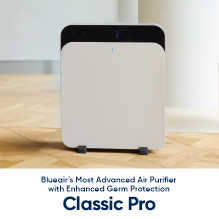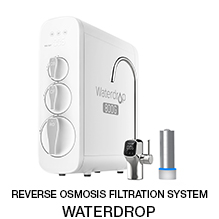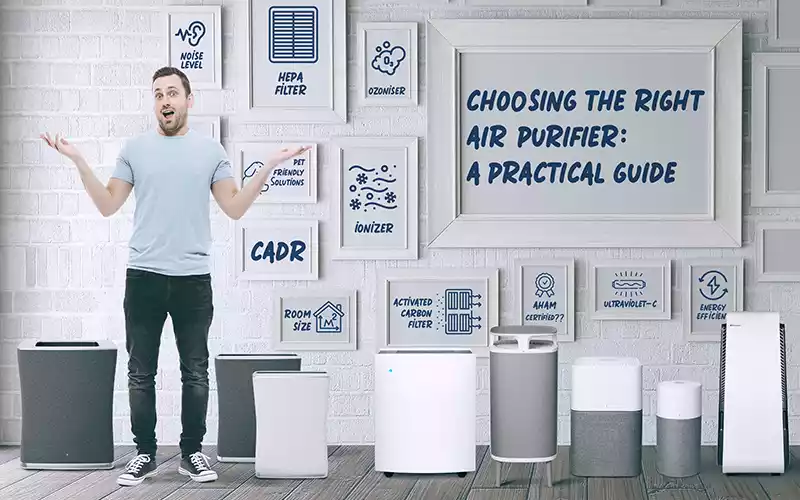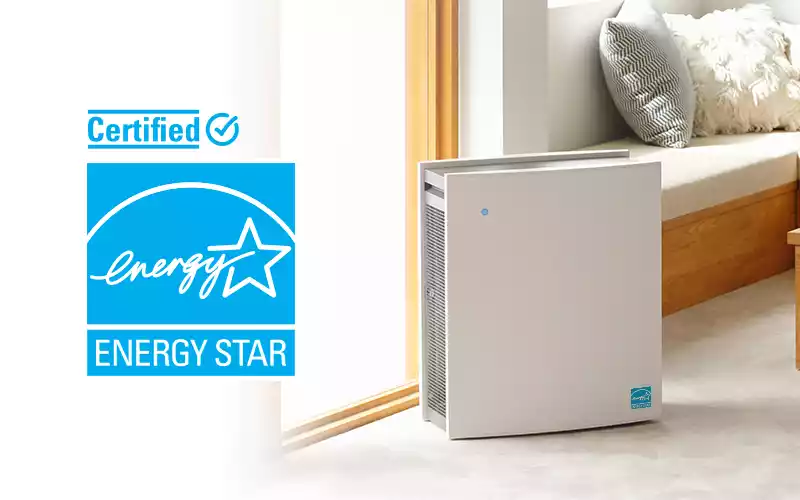When embarking on your air purifier journey, it's crucial to understand the different purification technologies available. Each technology targets specific pollutants and allergens, making some models more suitable for your needs than others.
Filter Media Based: Not all filters are created equal, each has its own level of effectiveness. In the context home air filtration, high efficient particulate arrestor (HEPA) filters reign supreme in terms of particle removal, boasting a theoretical efficiency of up to 99.95% filtration of particles as small as 0.3 microns (H13). Consequently, these filters boast a remarkable ability to capture a wide range of microscopic particles, including dust, pollen, pet dander, and mold spores, creating an environment that is noticeably cleaner and healthier. HEPA filter based air purifiers are recommended by health authorities such as the Environmental Protection Agency (EPA) and the World Health Organization (WHO) as a viable tool to improve indoor air. This level of filtration is of utmost importance, especially for those dealing with allergies, asthma, or other respiratory conditions. If you or your family members fall into these categories, a HEPA filter based air purifier is not merely an option – it should be the cornerstone of your air purification strategy, endorsed by the experts who prioritize your well-being. Activated Carbon Filter: These filters excel at capturing gasses, odors, smoke, and volatile organic compounds (VOCs) from cooking, smoking, or household products. If your primary concern is eliminating unwanted odors and VOCs from off-gassing, consider an air purifier with activated carbon filters. Ionizer: Ionizers emit negatively charged ions into the air, which can attach to airborne particles thus facilitating their capture by filters. However, caution is warranted as ionizers may produce ozone as a by-product, which can be harmful to human health and should be avoided. To ensure that the ionizer you are using does not produce ozone as a side effect, it is important to verify the manufacturer's claim and look for formal certifications from independent bodies such as the California Air Resources Board (CARB), UL, Intertek, or other Nationally Recognized Testing Laboratories (NRTL). CARB certification and other relevant certifications ensure that the ionizer meets safety and emission standards and is classified as ozone-free. Ozoniser: Ozonisers are devices that intentionally produce ozone, a gas containing three oxygen atoms. Ozone is a toxic gas that can cause respiratory problems, chest pain, coughing, and throat irritation when inhaled. Prolonged exposure to ozone can also lead to more serious health problems, such as lung damage and asthma. Some ozone generator manufacturers may suggest that ozone is a healthy kind of oxygen, using terms like "activated oxygen" or "pure air," which is not true. Ozone is actually a toxic gas that is not safe for human exposure. Ultraviolet-C (UV-C): While UV-C light is effective at neutralizing airborne bacteria and viruses, its suitability for air purification is primarily hindered by insufficient exposure time. Achieving effectiveness with UV-C light necessitates a specific duration of exposure to inactivate these microorganisms. Unfortunately, the air passing through an air purifier's UV-C light chamber is often too fleeting to yield the desired results. Both the intensity of the light and the proximity to the light source also play pivotal roles in determining its efficacy. Direct exposure to UV-C light may also cause harm to human skin and eyes (link to article on UV-C).
It is worth noting that a number of air purifiers available in today's market are essentially hybrids, cleverly combining multiple technologies to harness the unique benefits of each. These hybrid air purifiers integrate various purification methods to create comprehensive and effective air cleaning solutions. By merging technologies like HEPA based filter, activated carbon filter and ionizer, Blueair air purifiers proved very capable in addressing a wide range of indoor air quality concerns. Blueair’s innovative approach allows users to enjoy the advantages of each technology while potentially minimizing their individual drawbacks.
Addressing Specific Needs: Tailoring Your Choice
Evaluating Performance Criteria: Separate the Best from the Rest
Understanding CADR and Its Significance The primary approach to managing allergies is to avoid contact with allergens. For food allergies, carefully check ingredient labels and eliminate trigger foods from your diet. Clean Air Delivery Rate (CADR) serves as a standardized metric to assess the efficiency of an air purifier in eliminating specific airborne particles, such as dust, pollen, and smoke, from a designated area within a given time frame. The Association of Home Appliance Manufacturers (AHAM), a renowned trade association, publishes CADR ratings for over 300 air purifier models of different technologies and brands. This figure is arrived at through rigorous testing in controlled environments, making it a reliable benchmark for gauging an air purifier's capability. A higher CADR is generally indicative of a more rapid air purification process, rendering it particularly suitable for larger spaces. Conversely, a lower CADR may be sufficient for smaller rooms. However, while CADR serves as a useful initial reference, it does not provide a complete picture of an air purifier's overall quality and effectiveness. Beyond CADR: Exploring Critical Performance Factors While CADR offers valuable insights, it doesn't encapsulate the entire user experience. A holistic evaluation encompasses various factors, including:
A Final Word of Advice: Be Informed Air purifiers, recognized by experts including the US Environmental Protection Agency and the American Lung Association, play a vital role in improving indoor air quality. However, consumer misconceptions and disappointments often stem from a lack of understanding about selection and usage, exacerbated by misleading marketing practices and subjective reviews. To navigate this landscape, rely on impartial assessments from respected sources that quantitatively evaluate air purifier performance using relevant metric, shedding light on factors such as Clean Air Delivery Rate (CADR), noise level, energy efficiency, etc. By doing so, you can make informed choices, free from unsubstantiated claims, and find the right air purifier that meets your needs. The path to the right air purifier involves considering purification technologies, individual requirements, and performance benchmarks. With a comprehensive approach and awareness of common pitfalls, you can secure an air purifier that elevates your indoor air quality, fostering a healthier and more comfortable living space for you and your loved ones.
|
 | 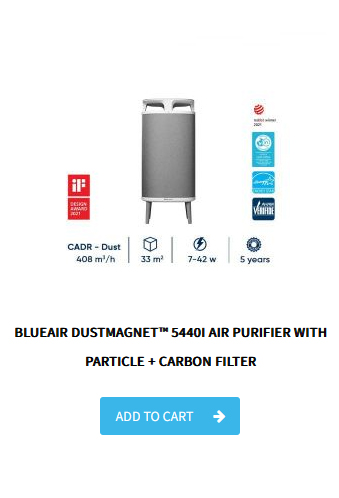 |
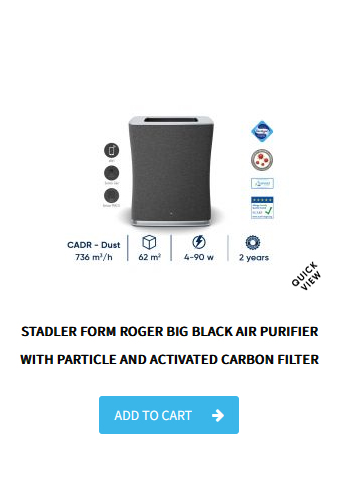 | |

